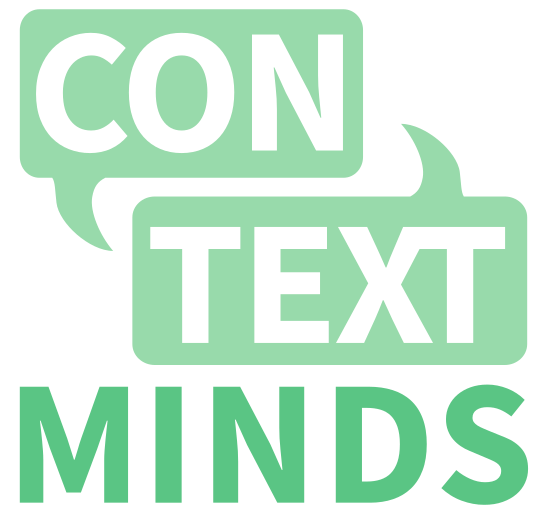How ContextMinds speeds link planning for content
A case study with two awesome ContextMinds users
Today, content writers have a cornucopia of tools they can use to identify unique topics, killer keywords and awesome linking opportunities. But most of them are so specialized that writers and content producers must keep multiple tools open and jump between them, fragmenting their time and attention. Or they must use time-consuming manual methods to map out sophisticated content linking structures.
Two writers, Joe Maracic and Morgan Nguyen, recently discovered a solution that not only streamlines their keyword research, content production and link planning needs. It also helps them generate more unique content ideas that can help them capture the attention of their audiences.
ContextMinds is a concept mapping tool that enables them to map out ideas visually, showing the connections and relationships between them. It also offers several key features that are unique for this type of tool:
- It utilizes a powerful AI engine to suggest related keywords and ideas that can be easily dragged and dropped into their visual diagrams.
- It displays search volume and keyword difficulty for each of these words
- It also surfaces related articles and links, helping them to enrich, expand and validate their content ideas.
For Maracic and Nguyen, ContextMinds is a huge time-saver. Here’s how it’s helping each of them to create content that ranks higher in search engines and is helping them grow their online authority.
Joe Maracic: ContextMinds for technical SEO
Maracic has been doing website development and SEO consulting for over 15 years and has seen a big evolution in how Google ranks content. It now favors elaborate link ecosystems that convey authority and thought leadership about his clients’ keywords and topics.
This involves designing websites with interlinked pages that help visitors find what they need and build “juice” with Google’s algorithm. It also requires a network of inbound links that signal to the search engine giant that his client’s website is a trustworthy source of quality information.
Building an ecosystem of inbound links
“I create several layers of referring websites, which include third-party sites like Medium.com, Yelp reviews, guest posts on authoritative websites and more,” he explains. “That protects the ‘money site’ – the client’s main website – in case any of them turn out to be toxic links that could negatively affect its search engine ranking.”
ContextMinds helps Maracic and his team map out this ecosystem of web pages and referring links. “It’s really helpful to be able to view everything at once, including keyword data and supporting notes.”
Maracic finds this bigger picture view valuable for his team’s internal use and to present to his clients. “I just send them a PDF of the mind map. It’s easy for them to understand,” he says.
Outlining content with ContextMinds
He also emphasizes that ContextMinds’ visual format makes it easy to brainstorm content ideas and outline their structure. “You can take the keywords you’ve gathered in the workspace and start moving them into a hierarchy, specifying which ones will be tagged H1, H2 and so on. If I see a research article in the right-hand panel that I think may be useful, I can drag and drop it into the outline, too,” he adds.
The ability to move topics around enables Maracic to take advantage of serendipity. “I often see patterns as I’m doing this and I realize, ‘That could be another article.’ I can move it to the side of the workspace and start grouping related concepts around it.”
Overall, Maracic is thrilled that he discovered ContextMinds. “It’s enabling me to do things that I used to require three to four windows open on my computer to manage. It makes my workflow more fun and definitely speeds it up.”
Morgan Nguyen: scaling content production with ContextMinds
Nguyen is a pharmacist by day and a content creator by night who is trying to build visibility and authority in his niche. Two of his big needs are brainstorming topics to write about and determining how they should be linked to each other, within his blog and externally. He’s competing against bloggers who publish as many as 1,000 articles per year – or three per day!
“I’ve discovered a huge number of potential topics I can write about. As I map out my blog’s content at this scale, I need to be cautious that I’m not cannibalizing my own work – in other words, writing about the same topic multiple times. Google doesn’t like that,” he cautions.
Nguyen points out that he could keep all of his article ideas and keyword data in a spreadsheet, but that wouldn’t allow him to visualize the linking between them.
Brainstorming audience-focused content topics
He believes a tool like ContextMinds, with its AI-driven topic suggestions, can help him develop unique takes on topics that are also focused on the needs of his audience.
“Think about it: When someone types a question into Google, its job is to provide them with links to web pages that contain the perfect answers. That means our job as content creators is to put everything they need into a single article, presented clearly and simply. Ideally, it should also anticipate their next questions. ContextMinds helps me to visualize that,” he emphasizes.
Nguyen’s vision will require a lot of content to accomplish. That means he will need to rely on tools to help him efficiently produce it in his spare time. But he draws the line at using AI to write articles for him. “A lot of the time, what they generate is junk. You have to spend so much time editing what the AI produces that it’s not worth it.”
How topic suggestions drive differentiation
He believes ContextMinds’ approach, where the AI suggests words and questions and the human behind it uses them as catalysts to drive more creative ideas, is the way to go. It also helps him to differentiate the content he produces, so it can capture attention in a growing sea of AI-produced content.
“Being able to come up with a unique idea or angle is more important than ever. Unfortunately, many other writers may copy your topic and writing style, but I believe ContextMinds will help me to stay one or two steps ahead of the crowd,” he adds.
Mapping out production processes
One unique way Nguyen is using ContextMinds is to design content production workflows:
“Ideally, I want to be able to use outside writers to produce a large volume of content for my website so I can reach domain authority faster and free up some of my spare time. That means I need a process to help me streamline author onboarding, formulating assignments, reviewing their work and publishing it on my blog.”
Initially, he tried using Figma to map out a workflow but quickly discovered that it wasn’t designed with that application in mind. “It was too hard to move shapes and connector lines as I developed the workflow I envisioned. It was much easier to do this in ContextMinds. It also saved me a lot of time.”
ContextMinds enabled him to add topics and connector lines to the workspace to represent a workflow, and to rearrange the diagram until it made sense – to experiment with it until it was a perfect visual representation of what he imagined. Unfortunately, his first outsourcing experiment failed, but not because of the visual workflow he designed.
“I was trying to use writers on Fiverr.com to produce blog articles for me. Not complete articles, but at least some rough ideas I could massage into full articles. But the quality was so poor that this approach didn’t work out,” he recalls.
Still, Nguyen is pleased that he has a process diagram completed that he can use as a starting point for future outsourcing experiments. “I hear that many successful web publishers use standard operating procedures to help them scale their businesses. I think my workflow diagram is a strong step in this direction.”
Conclusion
While Maracic’s approach is focused more on the technical side of SEO and Nguyen is all about creating effective content that builds domain authority, both of them agree that ContextMinds is a flexible, powerful tool that’s saving them a lot of time.
“As I learn more about what its capabilities are, I’m certain it’s going to play a bigger role in my work,” Maracic says. “It’s a game-changer for SEO.”

Useful links
Contact info
+420 607 881 942
info@contextminds.com
ContextMinds s.r.o
Blanická 922/25, Prague, Czechia
All Rights Reserved | EMC Engineering, s.r.o.










